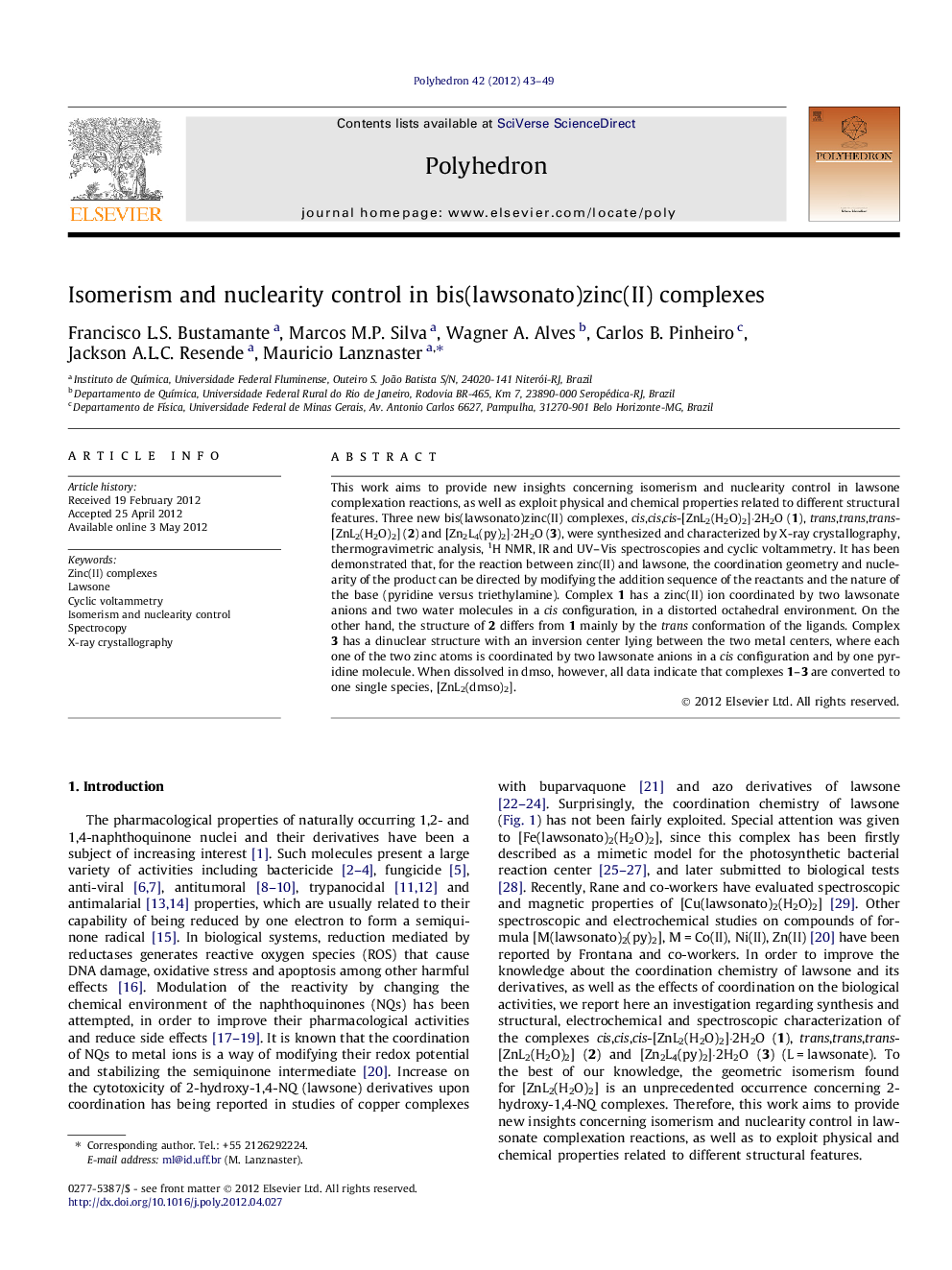| کد مقاله | کد نشریه | سال انتشار | مقاله انگلیسی | نسخه تمام متن |
|---|---|---|---|---|
| 1337433 | 979630 | 2012 | 7 صفحه PDF | دانلود رایگان |

This work aims to provide new insights concerning isomerism and nuclearity control in lawsone complexation reactions, as well as exploit physical and chemical properties related to different structural features. Three new bis(lawsonato)zinc(II) complexes, cis,cis,cis-[ZnL2(H2O)2]·2H2O (1), trans,trans,trans-[ZnL2(H2O)2] (2) and [Zn2L4(py)2]·2H2O (3), were synthesized and characterized by X-ray crystallography, thermogravimetric analysis, 1H NMR, IR and UV–Vis spectroscopies and cyclic voltammetry. It has been demonstrated that, for the reaction between zinc(II) and lawsone, the coordination geometry and nuclearity of the product can be directed by modifying the addition sequence of the reactants and the nature of the base (pyridine versus triethylamine). Complex 1 has a zinc(II) ion coordinated by two lawsonate anions and two water molecules in a cis configuration, in a distorted octahedral environment. On the other hand, the structure of 2 differs from 1 mainly by the trans conformation of the ligands. Complex 3 has a dinuclear structure with an inversion center lying between the two metal centers, where each one of the two zinc atoms is coordinated by two lawsonate anions in a cis configuration and by one pyridine molecule. When dissolved in dmso, however, all data indicate that complexes 1–3 are converted to one single species, [ZnL2(dmso)2].
For reactions between zinc(II) and lawsone, the coordination geometry and nuclearity of the products can be controlled by changing the addition sequence of the reactants and the nature of the base (pyridine versus triethylamine). X-ray, TGA, IR, 1H NMR, UV–Vis and CV techniques were used to evaluate how the chemical and physical properties of the complexes are affected by their different structural features.Figure optionsDownload as PowerPoint slideHighlights
► Three lawsonatozinc(II) complexes were synthesized and characterized.
► Two geometrical isomers were isolated, depending on the reactants addition sequence.
► A binuclear complex was obtained when pyridine was used as a base instead of Et3N.
► H-bonds cause a broadening in the IR bonds of the cis isomer.
► In dmso solution, all complexes are converted to one single species [Zn(L)2(dmso)2].
Journal: Polyhedron - Volume 42, Issue 1, 25 July 2012, Pages 43–49